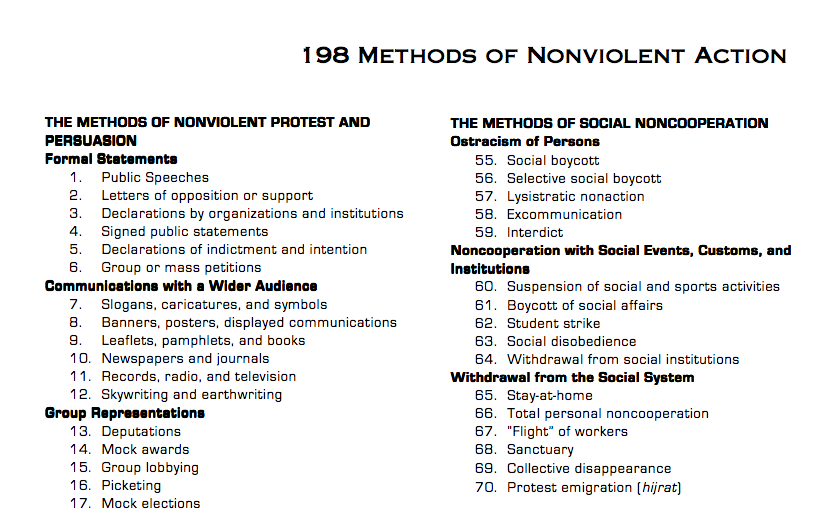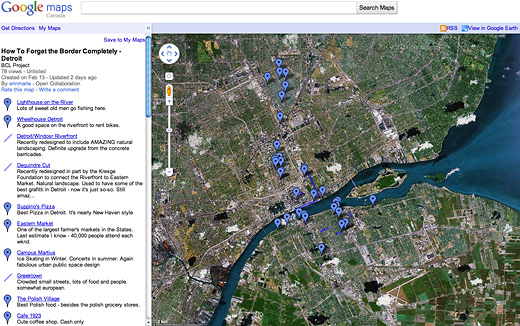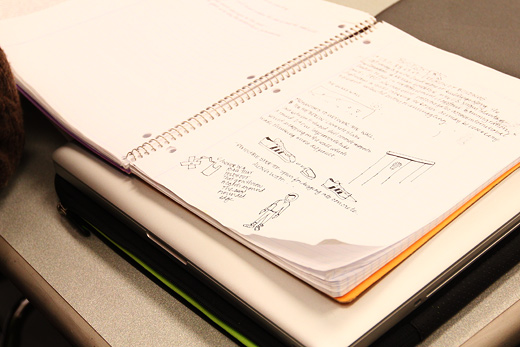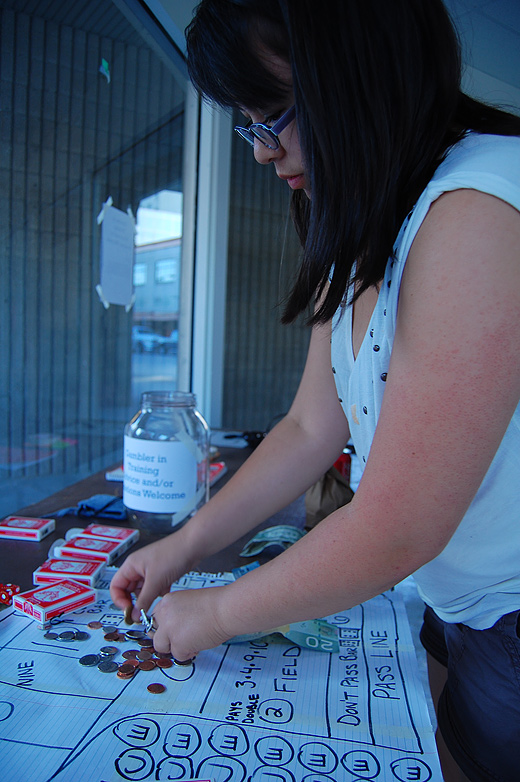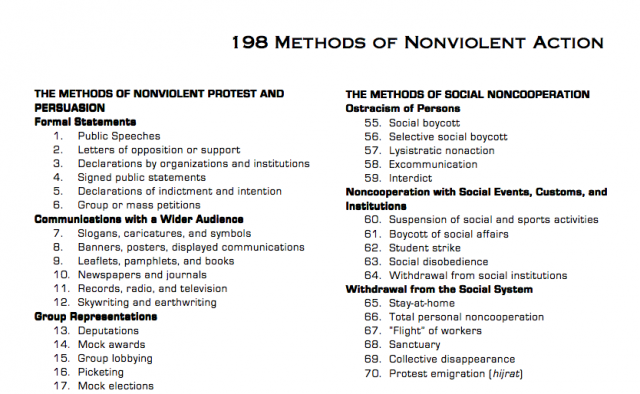
Over the last month, I’ve become rather interested in the work of Gene Sharp. He has published numerous books and journals that discuss, analyze and present realistic alternatives to violent action.
One of the most fascinating documents in his work is a list of 198 methods of non-violent action. The document breaks down the methods into three categories: nonviolent protest and persuasion, noncooperation (social, economic, and political), and nonviolent intervention.
In the last 30 year span of protest and revolution, many of these tactics have been proven worthy and effective by people putting them to practice.
In terms of our practice, I can’t help but reflect on how many of these tactics we’ve used in the past and even more interestingly, which ones we can use in future.
Check out the methods here.
